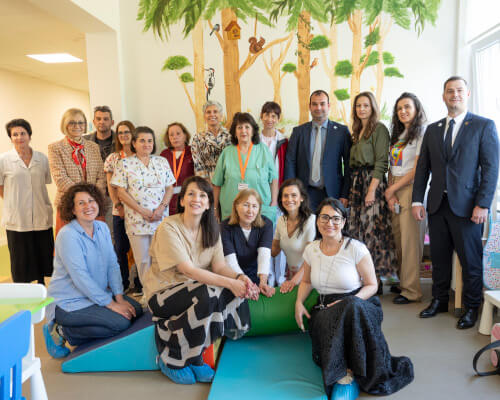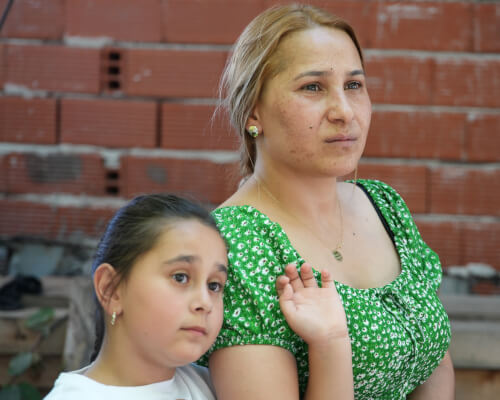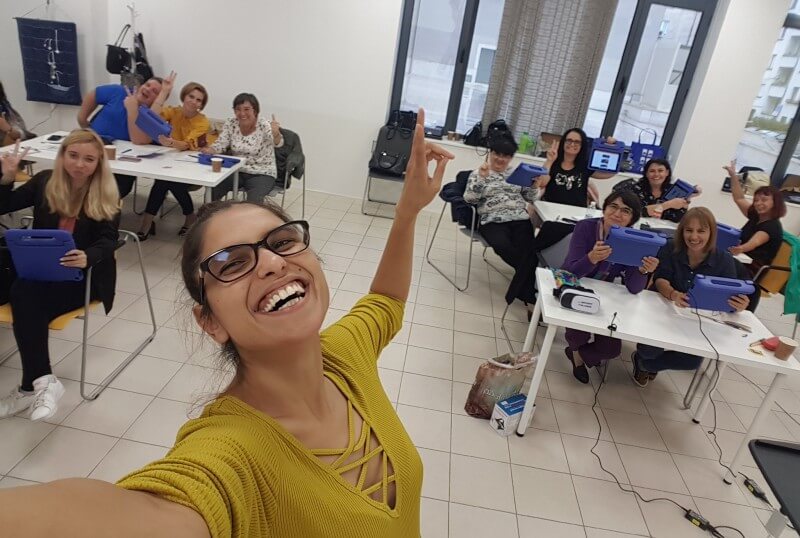
For most of her thirty-year teaching career, Teodora Raykovska ran a traditional classroom. The French and English language teacher from Acad. Mihail Arnaudov School, Sofia’s 119th, did dictations, assigned vocabulary lists, and quizzed students on what they memorized.
For the past two years, she and other colleagues from the school started integrating technology into classroom activities. “It was really hard for me, getting familiar with these applications and then applying them,” Ms. Raykovska admits.
However, she soon realized what other educators across Bulgaria are finding: if used the right way, technology promotes learning. Students are more engaged with their education, get better grades, and acquire skills that will serve them for life. For their part, teachers get the opportunity to do what they are best at — guiding, supporting, inspiring.
Ms. Raykovska and her colleagues are not alone. Bulgarian educators are slowly shifting their thinking about technology, and this transformation is happening largely thanks to the work of one organization — the Center for Creative Training.
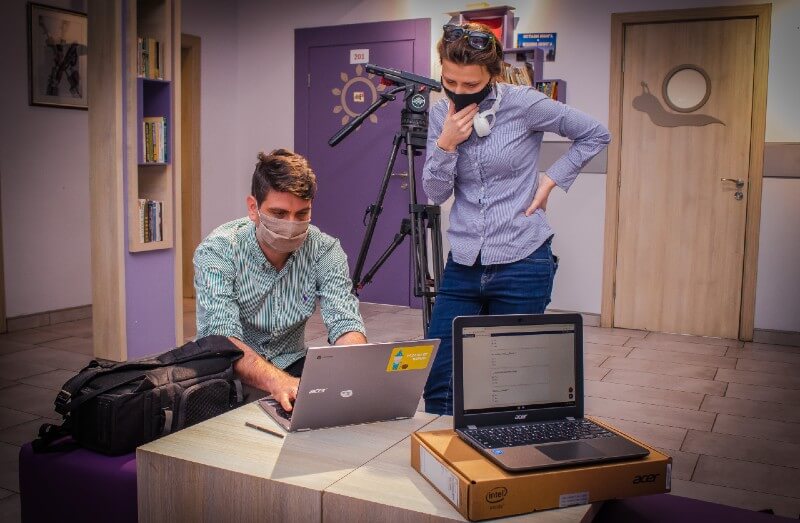
For a decade and a half, the Center has helped schoolteachers and principals nationwide overcome their fear of technology. Through a comprehensive, empathetic approach that includes trainings, solutions tailored to individual schools’ needs, and support throughout classroom transformation, the Center’s trainers have won over hundreds of education professionals to the cause of technology-assisted learning.
“Many people on the team have personal ties to education in Bulgaria, and we care deeply about what happens to it,” says Elisaveta Yakimova, a founding team member and the Center’s current head of marketing. Like many of her colleagues, she has a family member who works in education; she is the daughter of a kindergarten principal. This proximity gives the Center’s team an insider’s look into the challenges experienced by the educational system — as well as empathy for the individuals whose shoulders it rests on.
Elisaveta is also a certified teacher trainer, and like her colleagues, she likes to level with teachers and principals, acknowledging that technology has changed by such leaps and bounds in the past two decades that education professionals, like most adults, have a hard time keeping up. Trainers discuss challenges openly, dispel myths, and use examples from the teachers’ own work to explain the advantages of using technological solutions.
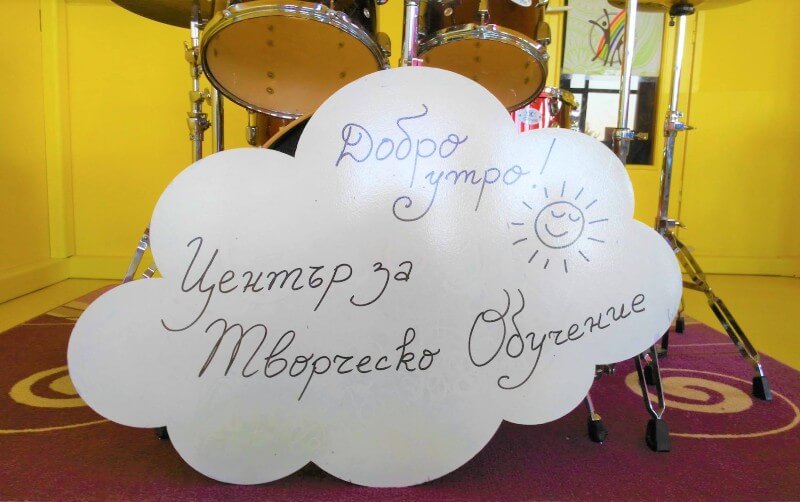
For instance, instead of assigning vocabulary lists, teachers might ask students to create an online restaurant menu in French class or an interactive 3D model of the human body for English. Guess which way they will remember gousse d’ail and glabella faster?
Ten years ago, when technology-enabled learning first started making inroads into Bulgarian classrooms, the Center’s team often had to start with the ABC of technology to help schools make the transition. This sometimes meant getting down on their hands and knees. “I helped get the wiring in place for broadband internet,” Elisaveta says, laughing. She also set up routers, configured devices, and offered troubleshooting for a variety of issues, technical and nontechnical. Once, she played a cloud in a video explaining what cloud technology is and how it could support school processes.
Other team members have similar stories to tell.
Challenges (and comical moments) notwithstanding, the fact is that technology is here to stay, and educators must keep up to give students the preparation they deserve. “That means teachers need to teach the way students learn,” Elisaveta says. And in the twenty-first century, students learn and experience the world through digital technologies.
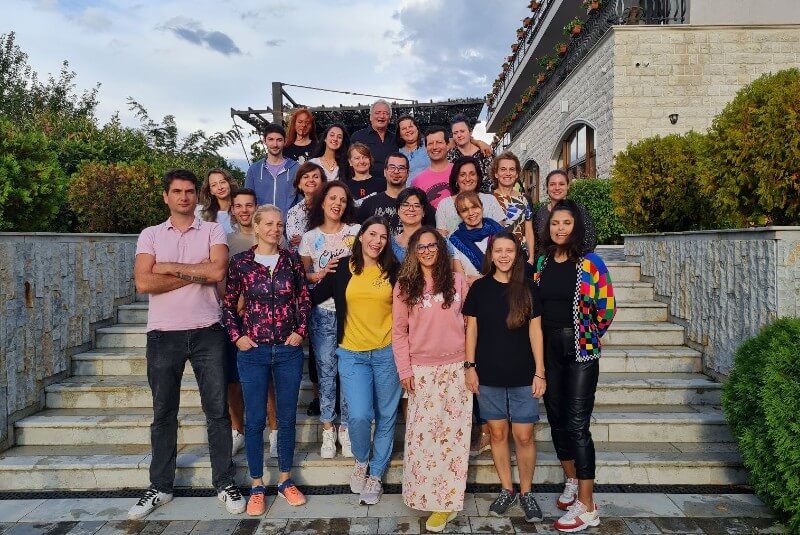
The Center partners with global leaders in educational innovation such as Google for Education and Lego ® Education to ensure the best technologies are available to Bulgarian schools. It has also developed its own solutions for technological inclusion such as Creative Classroom, Creative Kids, and the 1:1 Model.
Elisaveta points out that “precisely what technology you use doesn’t matter so much; what matters is that it follows the way kids learn.” And by extension — that it supports their dreams.
Another common misconception about technology-enabled learning that the Center’s trainers often encounter was handily summarized by Alexander Angelov, the Center’s CEO, at a TEDx event in July 2020. “It’s not that there is more screentime; it’s that there is more meaning [to screentime] because you’re making a product.”
What Alexander means is that, in today’s world, having knowledge is not enough. You have to know what to do with it, how to make something out of it. With technology-enabled learning models like the Center’s 1:1, screentime is productive time: learners apply their knowledge in the creation of menus, anatomical models, and others.
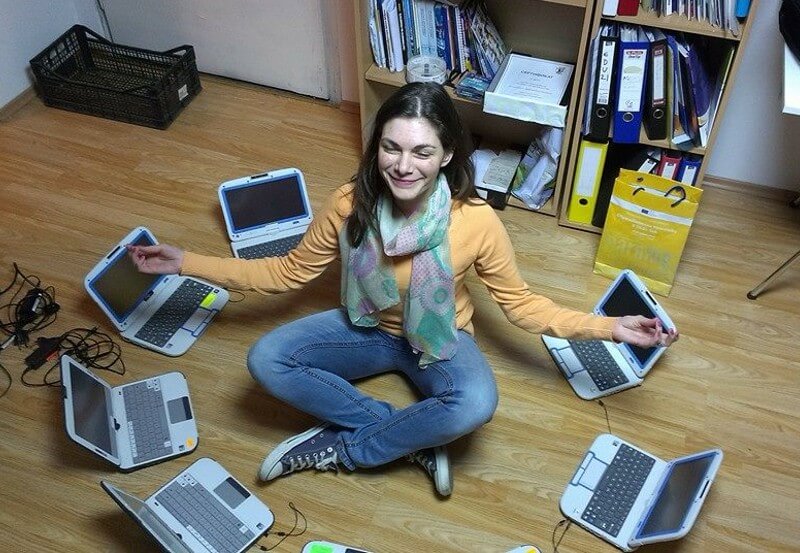
“A device is a learning tool,” says Stanislav Hristov, who is in charge of business development and the 1:1 Model’s promotion. “Devices allow students to access information and create content.” That does not mean they are on their devices the whole time. In fact, students spend considerable time interacting face-to-face, working on hypotheses, discussing findings, and rehearsing for presentations.
“In working on projects, students don’t just demonstrate knowledge but apply what they learned over several class sessions. They might even have to apply all they know in a subject. The best thing is that one project may require that they combine their knowledge of different fields such as history, geography, and computer science,” Stanislav says.
Being able to summon knowledge from a variety of subjects is valuable in any occupation, but particularly in multidisciplinary fields such as space studies. The Center has partnered with the region’s largest NASA-based space education initiative for youth, Space Camp Turkey, since 2007 to give young Bulgarians exposure to advanced multidisciplinary learning and stimulate their interest in STEM careers. Among the over 1,000 camp attendees from Bulgaria to date is Tatyana Ivanova from Dobrich. Her successful performance at the camp in 2018 led to several distinctions and admission to one of the top astronaut training programs in the world this year. Tatyana is just 19, but she is already reaching for the stars.
This is what Elisaveta, Alexander, Stanislav, and the rest of the Center’s team want for every Bulgarian child. They believe that, with the right educational tools and technology-brave teachers, dreams might just be within reach for everyone.
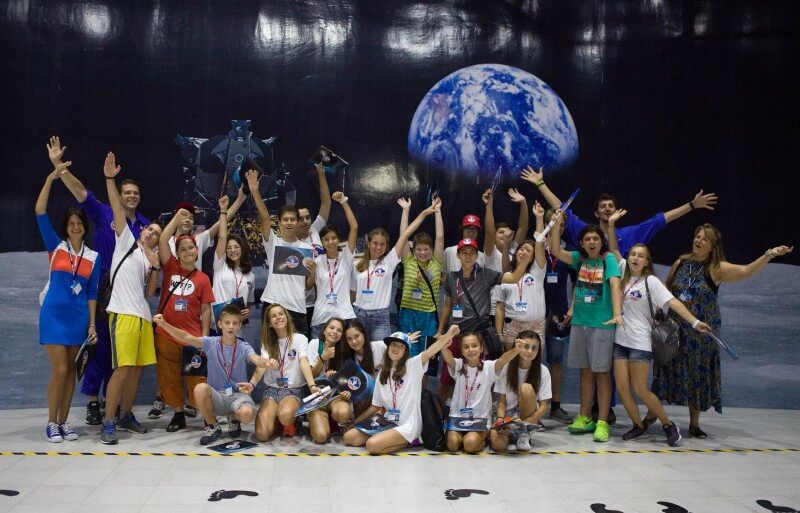
The Center for Creative Training is a long-term partner of the America for Bulgaria Foundation providing technological direction in the Foundation’s Schools of the Future program. Running from 2010 to 2019, the program created new-generation technological learning environments at 85 Bulgarian schools.
A quarter of Bulgarian schools, more than 5500 teachers, and thousands of students have benefited from the Center’s work to date. Fifty schools across Bulgaria apply its innovative technology-assisted learning model, 1:1. With ABF help, 1:1 resources are available for free at https://learning1to1.bg/
Find more stories and tips for successfully integrating technology in the classroom on the Center’s education tech blog “Be Technology Brave in Class.”
